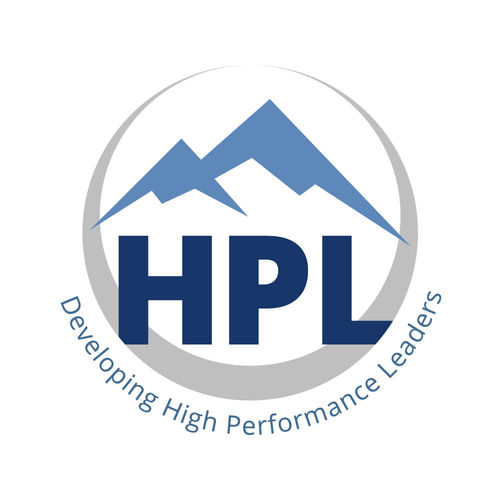
|
|
||
|
Lean methodology stands out as a beacon of efficiency and productivity. Originating from Toyota's renowned production system, Lean principles have permeated industries worldwide, guiding entities towards streamlined operations, waste reduction, and enhanced value delivery. Yet, amidst the initial triumphs of implementing Lean lies a critical juncture: sustaining its gains and perpetuating improvement. This phase marks the true test of an organization's commitment to excellence, where the focus shifts from mere adoption to relentless advancement and sustainability.
At its core, Lean embodies a philosophy of continuous improvement where every process, however efficient, is subject to scrutiny for enhancement. This spirit mirrors the essence of sustainability - the ability to endure and thrive over time, adapting to changing circumstances and evolving demands. Thus, the convergence of Lean and sustainability is not merely incidental but intrinsic. Both concepts hinge on the relentless pursuit of optimization and resilience in facing challenges.
The journey toward sustainability within a Lean framework begins with a firm foundation built upon change, standardization, visualization, and unification toward a common purpose. These initial steps lay the groundwork for future progress, fostering a cohesive environment for ongoing improvement. However, sustaining Lean is not a static endeavour but a dynamic commitment to perpetual advancement.
Lean and EmployeesOne of the fundamental pillars of Lean is respect for people. Lean recognizes that individuals are not merely cogs in a machine but valuable contributors to organizational success.
A great example I saw to help combat this was at Baylist Medical, where they make assistive surgical technology. They measure products produced in terms of "patients" rather than units. This powerful message reminds the team daily what and who they are working for.
By actively soliciting and listening to employee feedback, organizations demonstrate their commitment to this principle. Employees feel valued and respected when their opinions are sought and acted upon, fostering a culture of engagement and empowerment.
Employee feedback serves as a reality check for Lean initiatives. While Lean methodologies provide a structured framework for improvement, their effectiveness ultimately depends on real-world applicability. Employees on the front lines can give invaluable feedback on the feasibility and practicality of proposed changes, ensuring that Lean strategies align with operational realities.
Case Study
A great example of this occurred while working at Amazon Canada. I was visiting a facility, and the senior team hosting me explained how happy they were with a new kaizen that had recently been implemented. Some employees struggled to see if all the top bins had been emptied in the packing process. This resulted in packages missing items and causing rework down the line. The team gave each packer a paint roller to hook onto the top bin to pull the product forward and check if the bin was empty. However, not a single packer was using this paint roller kaizen!
After watching for a short time, I walked over to the nearest packer and asked them, "Hey, do you have a minute? I have a question for you... Why are you not using the paint roller to check the top bins?" The packer smiled and said, "Try it for yourself," gesturing to the paint roller magnetically hanging on the metal side of their packaging station. I went to pull the roller off the bin and found it was virtually impossible to remove! It took two hands before I could get that thing off the bin! The magnets were so strong!
This case study demonstrates two critical points:
1) Go and see! When you implement changes, you must go and see how they are being carried out! Amazon taught me repeatedly to Trust but Verify. Trust that your directions/actions have been implemented, but make sure you verify that things are as you expect!
2) Get Info From the Front Lines Your front lines and employees carrying out work on the floor have the most practical knowledge about how to do their jobs more efficiently. Instead of spending multiple hours in a conference room solving a problem you think is happening, go down to the floor and watch what is actually happening. Look for points of stress, abnormalities, and bottlenecks. Remember, you are working with and for people, so you need to talk to people!
Gemba WalksGemba walks are a powerful tool in Lean management, involving leaders going to the "gemba," or the actual place where work is done, to observe processes, engage with employees, and identify opportunities for improvement firsthand. The power of Gemba was demonstrated in the above case study. I strongly believe in the power of effective Gembas, one of my favourite things to do with my clients. There is so much valuable insight that can be achieved through this practice. Honestly, the most challenging part of Gemba is a routine of consistently doing so and learning to "see." However, once you learn to "see," you can never un-see it!
Again, while at Amazon as the head of Canadian Operations, I continuously travelled to different fulfillment facilities across Canada. I made it a personal priority to make time for Gemba everywhere I went. To do this, I commonly scheduled a meeting with the building management team at 9 a.m. I would then make sure to be in the building by no later than 8 a.m. Mean? Perhaps!
As anyone who works on any team knows, the hour before a big meeting like this is typically chaos! The production floor is getting cleaned and tidied up, management is running around getting organized, and often, employees are pulled away from normal tasks to assist in getting ready. It should not be like this, though!
I would arrive early, not tell anyone I was there, and walk the plant floor alone. My favourite spot to watch the plant process was from a catwalk or other high vantage point. That way, I had a bird's-eye view of the processes while staying out of the way.
To Read More About Gemba, Click HERE
Three key points to remember when conducting Gemba walks are:
1) Seek to Understand - focus on understanding the process and gathering insights rather than immediately proposing solutions.
2) Engage - actively listen to employees and value their expertise and perspectives on how to improve workflows.
3) Sustain - foster a culture of continuous improvement by encouraging open communication and collaboration between leaders and frontline workers.
Sustainable HabitsImplementing Lean thinking requires more than just adopting new practices; it necessitates cultivating habits promoting continuous improvement and waste reduction. One practical approach to fostering habits in Lean implementation is the 28-day habit tool, coupled with a strong emphasis on consistency to establish organizational stability and standards.
The 28-day habit tool is rooted in the idea that consistent repetition of action over 28 consecutive days can lead to forming a habit. This principle underscores the importance of sustained effort and repetition in ingraining new behaviours and practices. When applied to Lean thinking, the 28-day habit tool is a framework for systematically integrating Lean principles into daily operations and routines. Consistency plays a pivotal role in creating stability and standards within an organization. By consistently applying Lean principles and methodologies, organizations establish a baseline of expectations and behaviours that become ingrained in the culture. Consistency fosters predictability, reliability, and repeatability, which are essential for achieving operational excellence and continuous improvement.
Click HERE To Get Free Download
To leverage the 28-day habit tool and promote consistency in Lean implementation, organizations can adopt the following strategies:
Structured Training and Education: Provide comprehensive training and education programs to ensure employees understand the core principles of Lean thinking and their relevance to their roles and responsibilities. Reinforce learning through regular workshops, seminars, and hands-on exercises.
Identifies seven non-value-adding activities commonly found in manufacturing and service processes. TIM WOODS stands for Transportation, Inventory, Motion, Waiting, Overproduction, Over-processing, and Defects. By recognizing and eliminating these sources of waste, organizations can streamline operations, optimize resource utilization, and enhance customer satisfaction.
Continuous Monitoring and Feedback: Establish mechanisms for monitoring progress and providing feedback on Lean implementation efforts. Regularly review key performance indicators, conduct Gemba walks, and solicit employee feedback to identify areas for improvement and ensure alignment with organizational goals.
By embracing the 28-day habit tool and prioritizing consistency in Lean implementation, organizations can foster habits that support the sustained application of Lean principles and drive continuous improvement across all levels of the organization. Through structured training, daily rituals, continuous monitoring, leadership support, and celebrating successes, organizations can create a culture where Lean thinking becomes ingrained in the organization's fabric, driving lasting results and competitive advantage.
Final ThoughtsContinuous improvement in Lean also entails harnessing the power of data and technology. Leveraging advanced analytics, machine learning, and automation, organizations can uncover insights, identify inefficiencies, and optimize processes with unprecedented precision. By embracing innovation, companies can stay ahead of the curve and drive sustainable growth in an ever-evolving landscape. However, sustaining Lean is not without its challenges. Complacency, resistance to change, and short-term thinking can impede progress and erode gains. Thus, leadership is pivotal in maintaining momentum and fostering a culture of excellence. Leaders must champion the cause of Lean and provide the necessary support, resources, and incentives to empower employees to drive continuous improvement. Quick ReadLean methodology, stemming from Toyota's renowned production system, has become synonymous with efficiency and productivity across industries worldwide. While initial implementation yields success, the true challenge lies in sustaining gains and perpetuating improvement. At its core, Lean embodies a philosophy of perpetual betterment, advocating for a culture of continuous improvement and sustainability. This convergence of Lean and sustainability hinges on a firm foundation built upon change, standardization, visualization, and unification. Central to Lean's success is its recognition of the importance of employees.
Organizations foster a culture of engagement and empowerment by valuing their input and actively soliciting feedback. Employee feedback is a vital reality check for Lean initiatives, ensuring alignment with operational realities and driving tangible improvements. A case study from Amazon highlights the importance of "going and seeing" and obtaining insights from frontline workers, emphasizing the need for practical knowledge in problem-solving.
Gemba walks, where leaders observe processes firsthand, engage with employees, and identify improvement opportunities, are instrumental in Lean management. These walks facilitate valuable insights and promote a culture of continuous improvement. Three key points for effective Gemba walks include understanding processes, actively listening to employees, and fostering open communication and collaboration.
In sustaining Lean thinking, the 28-day habit tool and consistency play crucial roles. The 28-day habit tool emphasizes the formation of habits through consistent repetition, while consistency establishes stability and standards within the organization. Strategies such as structured training, daily rituals, and leadership support are essential for leveraging the 28-day habit tool and promoting consistency in Lean implementation.
Ultimately, sustaining Lean requires embracing innovation and overcoming challenges like complacency and resistance to change. Leadership is pivotal in maintaining momentum and fostering a culture of excellence. Organizations can achieve lasting results and competitive advantage in today's dynamic business environment by championing Lean principles and empowering employees to drive continuous improvement. |
||
|
||
|
||
|

|
|
HPL Administrator 7 November 29, 2024 |

|
|
Sabrina Sommerville 1 August 15, 2024 |

|
|
Glenn Sommerville 45 June 6, 2024 |